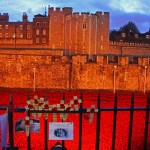Patagonia – Wildlife, Wind & Wilderness (19.11.14)
The grandstand scale of all things Patagonian is something that stays with you forever.

Puerito Moreno – Los Glaciares National Park, Argentina.
Whether leaning over a map or plotting your progress with a satellite tracker as you fly, drive, ride or walk across Patagonia, the vast landscape and sense of remoteness is astonishing. Even when constantly travelling you never feel as if you are making any distance. It is so huge that a two hour flight covers no more than a few inches, and a ten day trek appears to take you through a thimble’s width worth of mountains.
I regard this sparsely populated region, at the bottom of the living world, as one of the most impressive and exciting wilderness areas I have ever visited. The wildlife opportunities are straight out of a child’s story book. Giant 16ft (4.9m) elephant seals, weighing up to 6,600 lbs (3,000 kg), square up to each other like goliaths, with breath to settle tequila from a 100 metres. Sea lion colonies stretch and loll along wild beaches like mid-summer bathers in the Cote d’Azur. Southern Patagonia has over a million Magellanic penguins (in more than 50 colonies), swathes of black-browed albatross (over 140,000 breeding pairs), cormorants, austral parakeets, upland geese, pink flamingos and gliding condors. All this is matched by the diversity of the marine life, dominated by a harsh environment with high windswept cliffs, rolling beaches, steep fjords, lowland marshes and waters varying in temperatures from sub-Antarctic to sub-tropical.

Sea lions – Peninsula Valdez, Argentina.
Over the years we at Nomadic Thoughts have frequently arranged client itineraries to include Patagonia’s best wildlife opportunities. Seeing all forms of Patagonian flora and fauna up close and personal remains one of the continent’s most special treats. Particular favourites of mine are the bottlenose dolphins and breeding whales, but it is also a delight to see – in the mountains – the Guanaco (descendants from the llama species) which are prolific and live in herds. This is in contrast to the endangered huemul deer – one of Patagonia’s most elusive animals.
Then there is the wind!
Racing like jet engines, winds flick past the vast southern Patagonian peninsular like a pegged piece of cardboard flipping past the spokes on a bicycle wheel. Constant, loud and colossal. The roar is so strong that on one occasion, when staying in the Torres Del Paine Natural Park, I sat bolt upright in the middle of the night to the deafening sound of what I thought was a 747 passenger jet landing by my bed.
I also remember when trekking the Torres del Paine eight day mountain circuit naively setting up our tent on the shores of Glacier Grey’s glacial lake. We were rescued by a rare local ranger who suggested we camp closer to the mountains, on the basis that the soon-to-be force eleven wind would make it impossible for the tent to stay on the ground. Re-pitching our tent in the nearby mountain, just above the tree line, we watched from a considerable distance as the lake shores became a whirling dervish that would have turned us into a distant kite. The flip side is that wherever you are in the Patagonian Andes, the endless supply of wind-dried firewood sparks up in few seconds.

Lago Dickson – Torres Del Paine, Chile.
Ideally all trips to Patagonia should include a crossing of the Andes Mountains. Snow-capped and glacier-dominated, they stand like sentries between the lusher, more colourful terrain in Chile and the open plain landscapes of Argentina.
Journeying from one side to the other, you will be amazed by the contrasting wilderness landscapes. For example the spectacularly rugged South Pacific Ocean coastline offers thousands of miles of magnificent Chilean fjord-land scenery, in contrast to the gentler, sweeping South Atlantic Argentinian coast. This in turn is mirrored by the dramatic change in landscape as you cross from west to east. Calmer, less wild and arguably less windy, the Argentinian side feels a little more forgiving. Which is probably the reason the first Welsh settlers downed tools in the southern Chubat Province in 1865.
It was a tough choice for them all the same, as Argentine Patagonia, set in the Andean rain shadow, is predominantly spread across steppe-like plains, with huge areas of semi-arid desert-scape, and vast bare vegetation plateaus akin to North America’s prairies.

Chilean Lake District
Today’s visitors however, can put aside yesteryear’s hardship, and enjoy a huge variety of possibilities. As long as you avoid mid-winter and May –August, trekking, kayaking, fishing, river-riding, glacier-spotting, mountaineering and all things active await you. Equally if you prefer to travel in relative comfort there a host of charming lodges, hotels and tourist facilities to match the magnificence of all things ‘grandstand Patagonia’.

















Click here to add your own text







